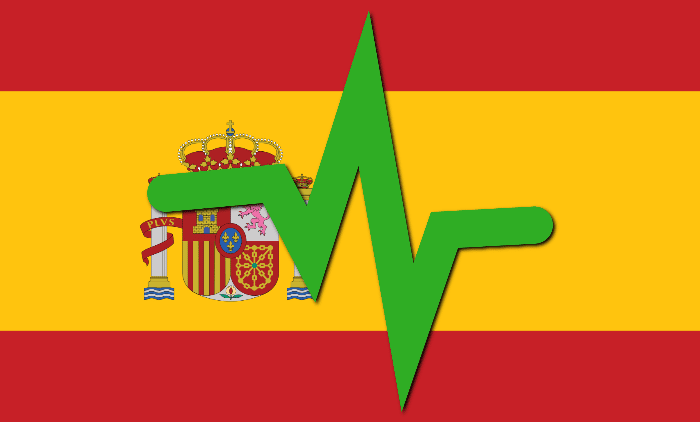How much do you have to walk a day? Science debunks the myth of 10,000 steps a day
[ad_1]
If there is a figure that has been discussed in the field of the health benefits of physical exercise, it is walking 10,000 steps a day, the equivalent of about seven kilometers. It has even been said that it is a recommendation from the World Health Organization (WHO), but it does not mention this number among its advice for a healthy life. For the population between 18 and 64 years old, it encourages moderate aerobic activities to be carried out between 150 and 300 minutes a week – between two and a half and five hours – or half of this time if the intensity is higher. A combination of both would also work. Training to strengthen the muscles a minimum of twice a week should be added to any of these options. But nothing of the famous 10,000 steps.
Numerous studies have discarded this scale and lowered it to 8,000 steps or even less. The last one, published this Wednesday in the specialized magazine British Journal of Sports Medicine, assures that it would be worth walking 2,200 steps to reduce the risk of mortality and cardiovascular disease (CVD) and that – this is the great news – if we walk between 9,000 and 10,000 steps, we compensate for the risks of a very sedentary life, understanding this as spending more than ten and a half hours sitting or lying down without counting hours of sleep.
«Any number of daily steps above 2,200 was associated with lower mortality and risk of incident cardiovascular diseases (CVD). Accumulating between 9,000 and 10,000 steps/day optimally reduced the risk of mortality and CVD even among very sedentary people. Specifically, the risk of mortality was reduced by 39% and the risk of coronary heart disease by 21%.
Researchers at the University of Sydney/Charles Perkins Center reached these conclusions after analyzing the activity of 72,174 people registered in the UK Biobank, a data bank that contains information on half a million Britons. All of them had worn an accelerometer for a week – any watch or sports bracelet has this sensor – on their wrist to measure the amount of exercise they did. “Our results can be used to enhance public health messages and to make specific recommendations about how much to walk daily,” they conclude.
Where does the myth of 10,000 steps come from?
If the WHO has not recommended walking 10,000 steps to have good health, what is the origin of this figure as an almost totemic reference for well-being? Apparently, everything is due to a marketing strategy of the sellers of sports watches and bracelets. In this case, the origin dates back to 1965 in Japan. Then, a Japanese company launched a pedometer called ‘Manpo-Kei’, which translated means ‘10,000 step meter’. They chose that figure because in Japanese spelling, it looks like a man walking.
Having discarded the myth, health authorities insist on the importance of doing physical activity, no matter how short a time. Better than nothing. The data from the World Health Organization is eloquent: more than a quarter of the world’s adult population – 1.4 billion people – does not reach the minimum level of exercise and the statistics have not improved since 2001, more than two decades ago. . The consequences are also: last week a study by the prestigious journal The Lancet put the number of obese people on the entire planet at more than one billion, with the projection that it will double by 2030. This disease already causes 5 million deaths. and 40 million sick people around the world.
It’s never too early or too late to start. For babies under one year of age, WHO recommends interactive floor play several times a day and they should not be restrained in strollers or chairs or attached to the chest or back of their parents or caregivers for more than one hour at a time. . At the opposite extreme, for those over 65 years of age, the same advice applies as for adults, to which exercises must be added to work on balance and strength in order to reduce the risk of falls.
As long as they do not have contraindications, pregnant women and women who have recently given birth can and should remain active. The recommendation would be at least 150 minutes of aerobic exercise per week. And also people with chronic illnesses and who have overcome cancer. For the latter, physical activity has begun to be recommended even during treatment.
Tricks to walk more almost without realizing it
To fulfill the duty of moving a little more, walking is one of the most accessible options. Although it is not necessary to reach 10,000 steps, the prestigious Mayo Clinic offers several tricks to walk more almost without realizing it. The most common is to avoid elevators and opt for going up and down the stairs. If you have a dog, go out for a walk. If you don’t have it, you can accompany a friend who has it or go to an animal shelter. Music – if it can be animated – can also be an ally to motivate us to go out. At work there are also options. Instead of sending an email, you can walk up to the table of the person you want to talk to. And you can also take short breaks during which you can take a short tour. Parking further away from our destination and walking while we wait at the airport or any appointment are equally good options.
[ad_2]
Source link




